- About MAA
- Membership
- MAA Publications
- Periodicals
- Blogs
- MAA Book Series
- MAA Press (an imprint of the AMS)
- MAA Notes
- MAA Reviews
- Mathematical Communication
- Information for Libraries
- Author Resources
- Advertise with MAA
- Meetings
- Competitions
- Programs
- Communities
- MAA Sections
- SIGMAA
- MAA Connect
- Students
- MAA Awards
- Awards Booklets
- Writing Awards
- Teaching Awards
- Service Awards
- Research Awards
- Lecture Awards
- Putnam Competition Individual and Team Winners
- D. E. Shaw Group AMC 8 Awards & Certificates
- Maryam Mirzakhani AMC 10 A Awards & Certificates
- Two Sigma AMC 10 B Awards & Certificates
- Jane Street AMC 12 A Awards & Certificates
- Akamai AMC 12 B Awards & Certificates
- High School Teachers
- News
You are here
Mathematical Treasure: Daniel Fenning's Young Algebraist's Companion
Daniel Fenning (1715–1767) was an English schoolmaster and grammarian. He wrote fourteen popular textbooks, mainly on mathematics, geography and spelling. Many of these books were used in the British colonies in North America. Fenning was a consummate teacher, and his books are pedagogically structured to guide learners into their subjects. One of his first writing ventures was the 1751 The Young Algebraist’s Companion, which was warmly received by the British public. Note the book’s owner whose signature proudly occupies the title page.
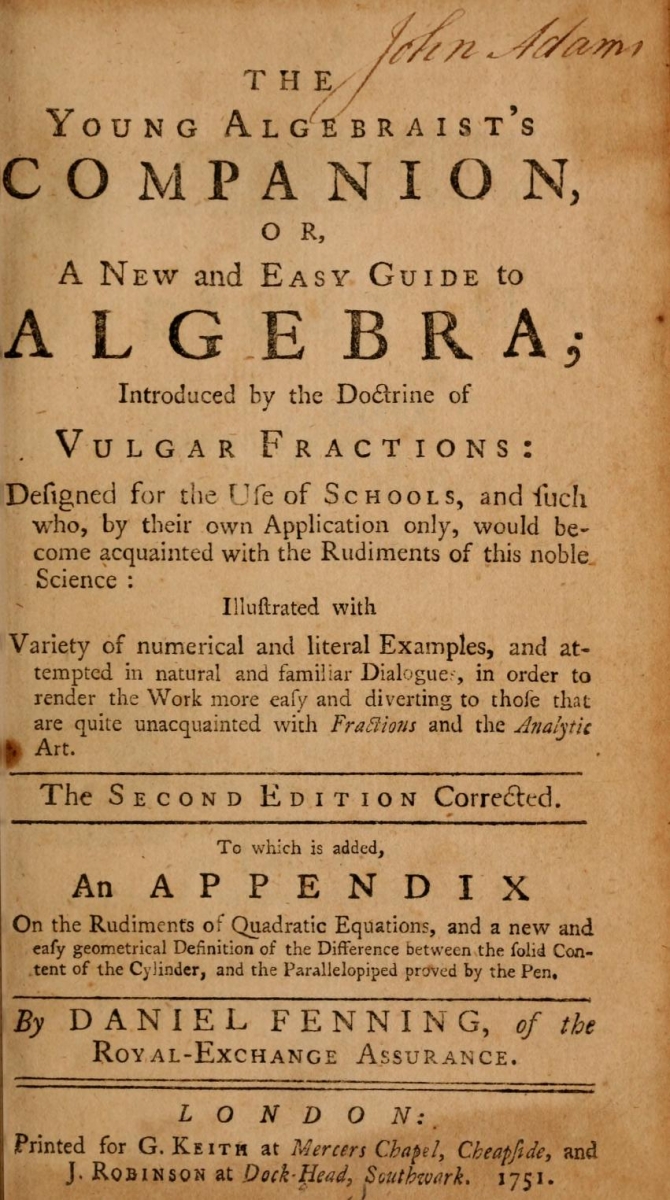
In his preface, Fenning explains his objectives.
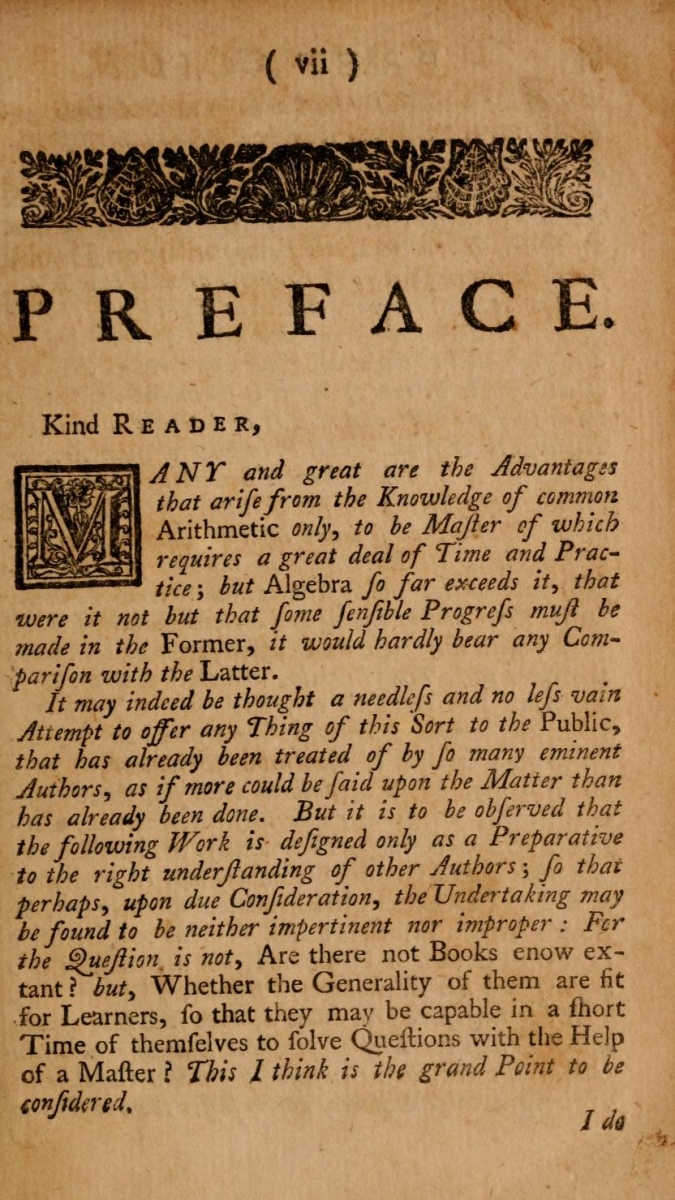
The author employs dialogue as a teaching device. Robert Recorde had used the same technique in his mathematical works in the 16th century.
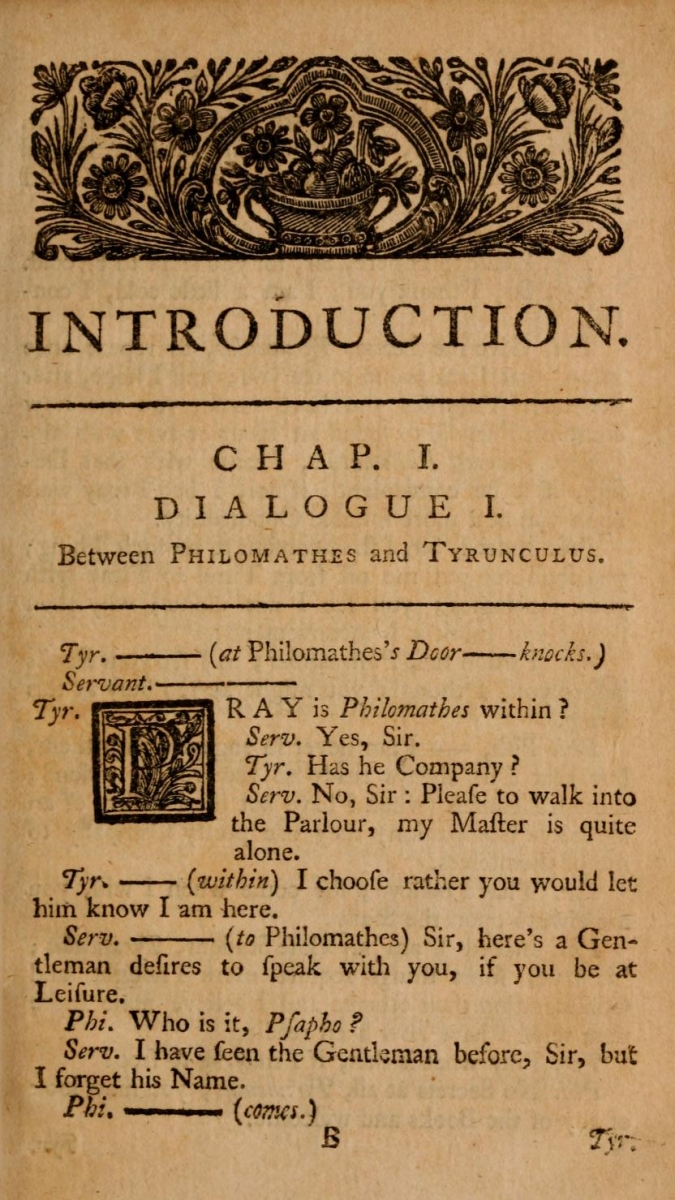
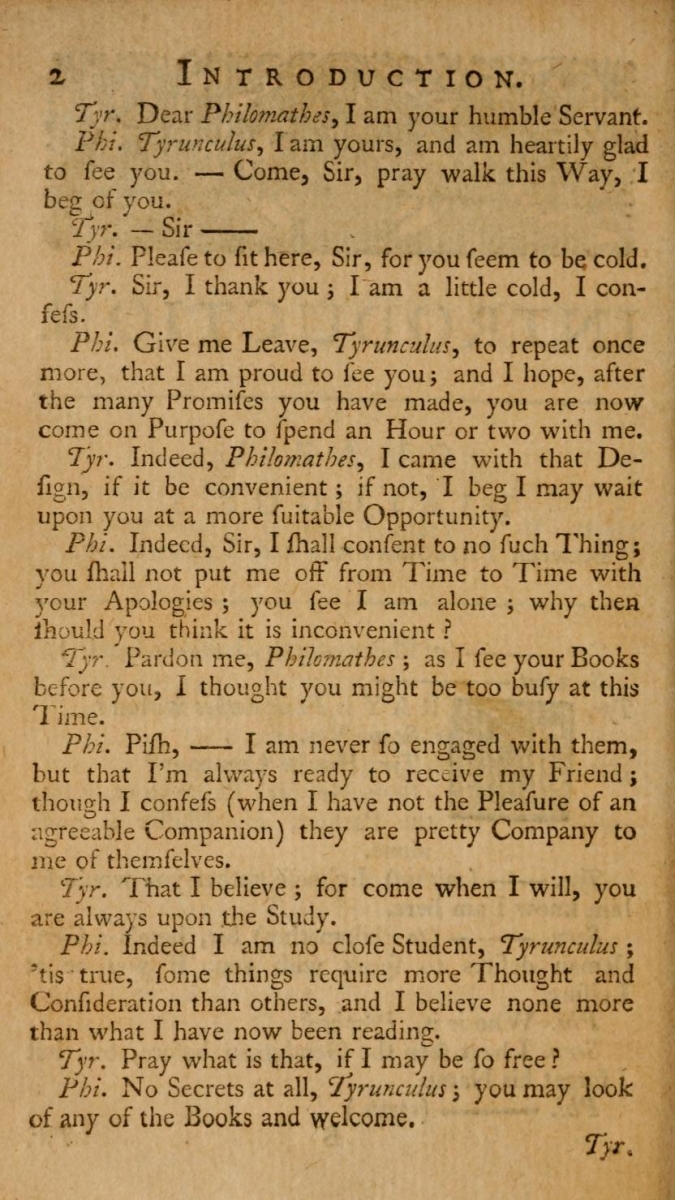
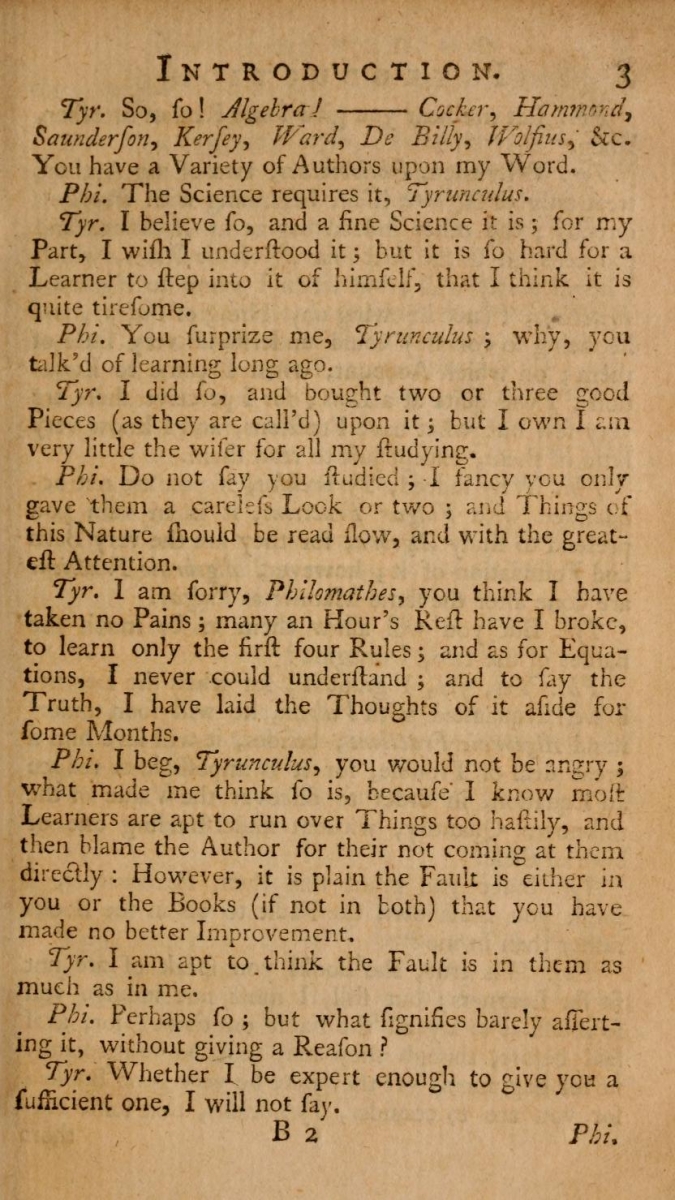
Daniel Fenning used the concept of common fractions to introduce his reader to the convenience of algebraic notation.
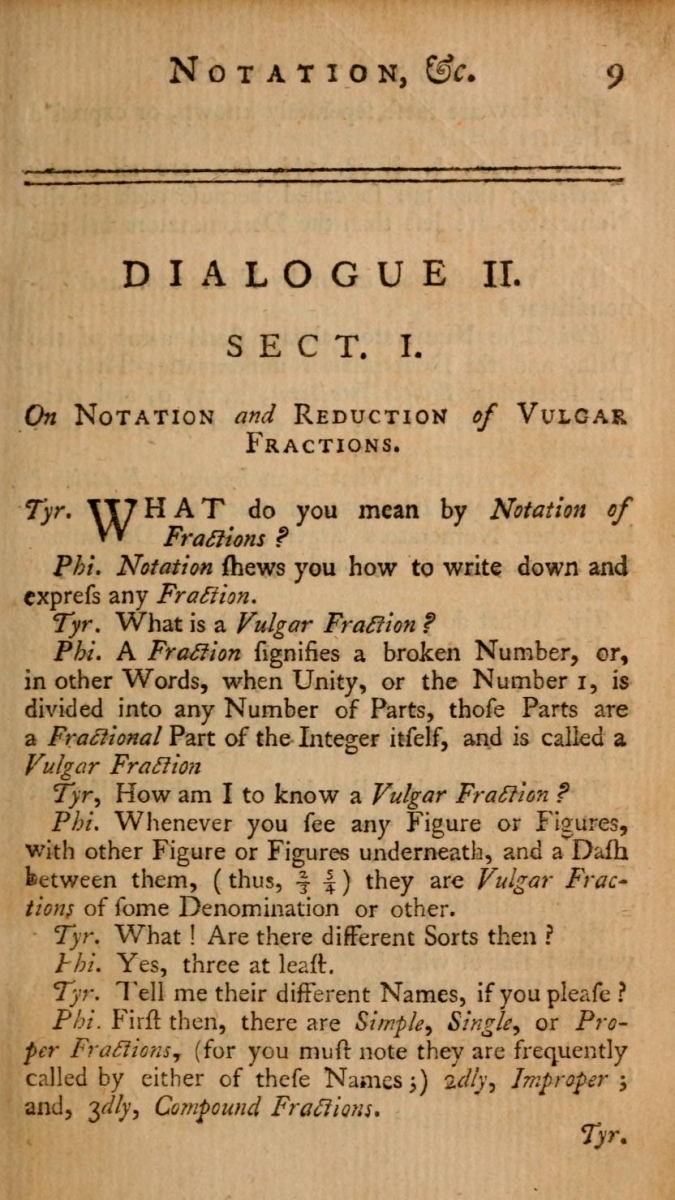
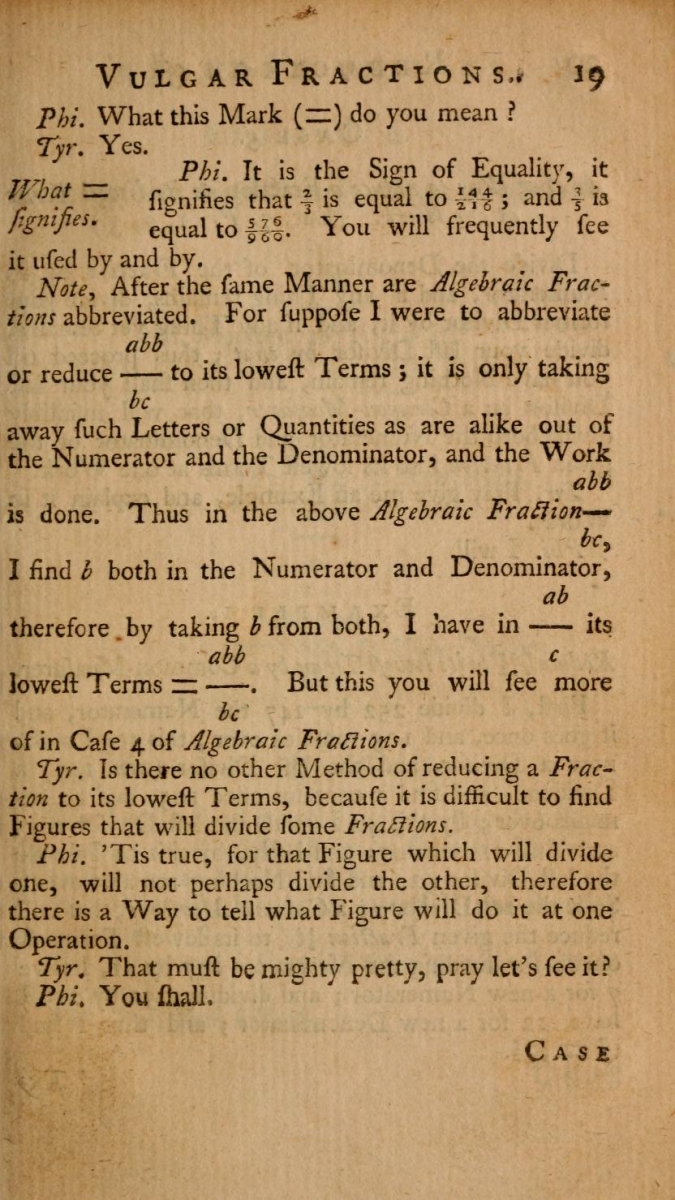

A more complete discussion of symbolic notation is given in later pages.

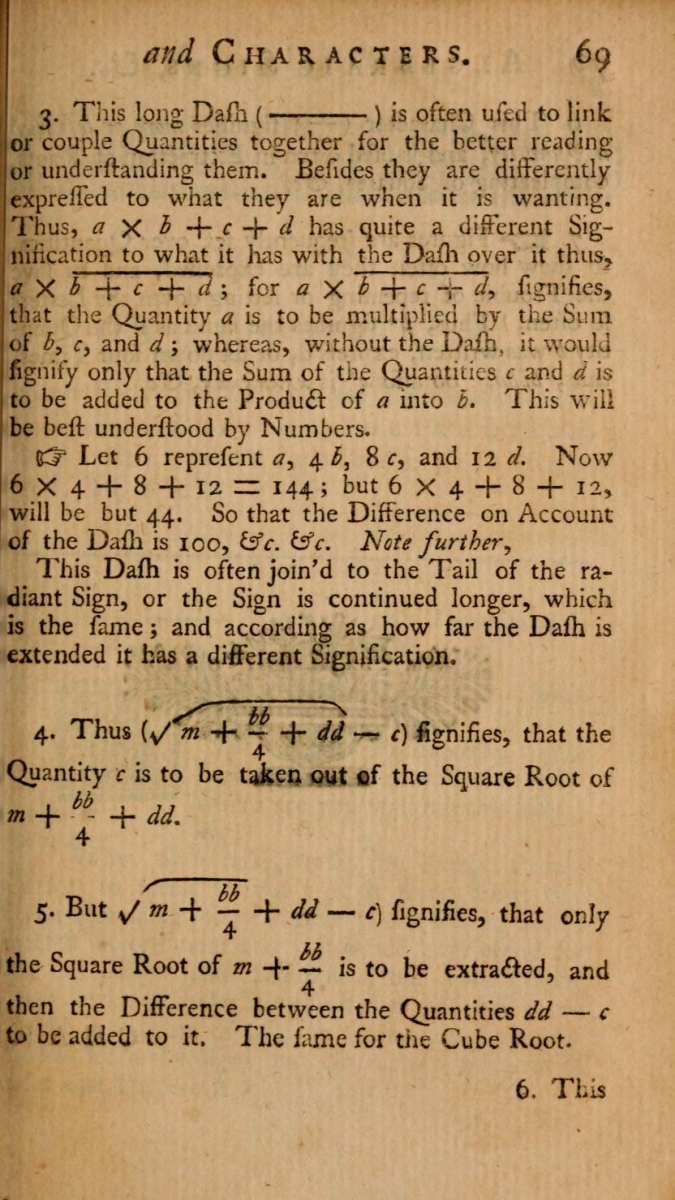
The images above are presented courtesy of the Boston Public Library’s John Adams Library and are available via the Internet Archive.
Frank J. Swetz (Pennsylvania State University), "Mathematical Treasure: Daniel Fenning's Young Algebraist's Companion," Convergence (December 2020)




